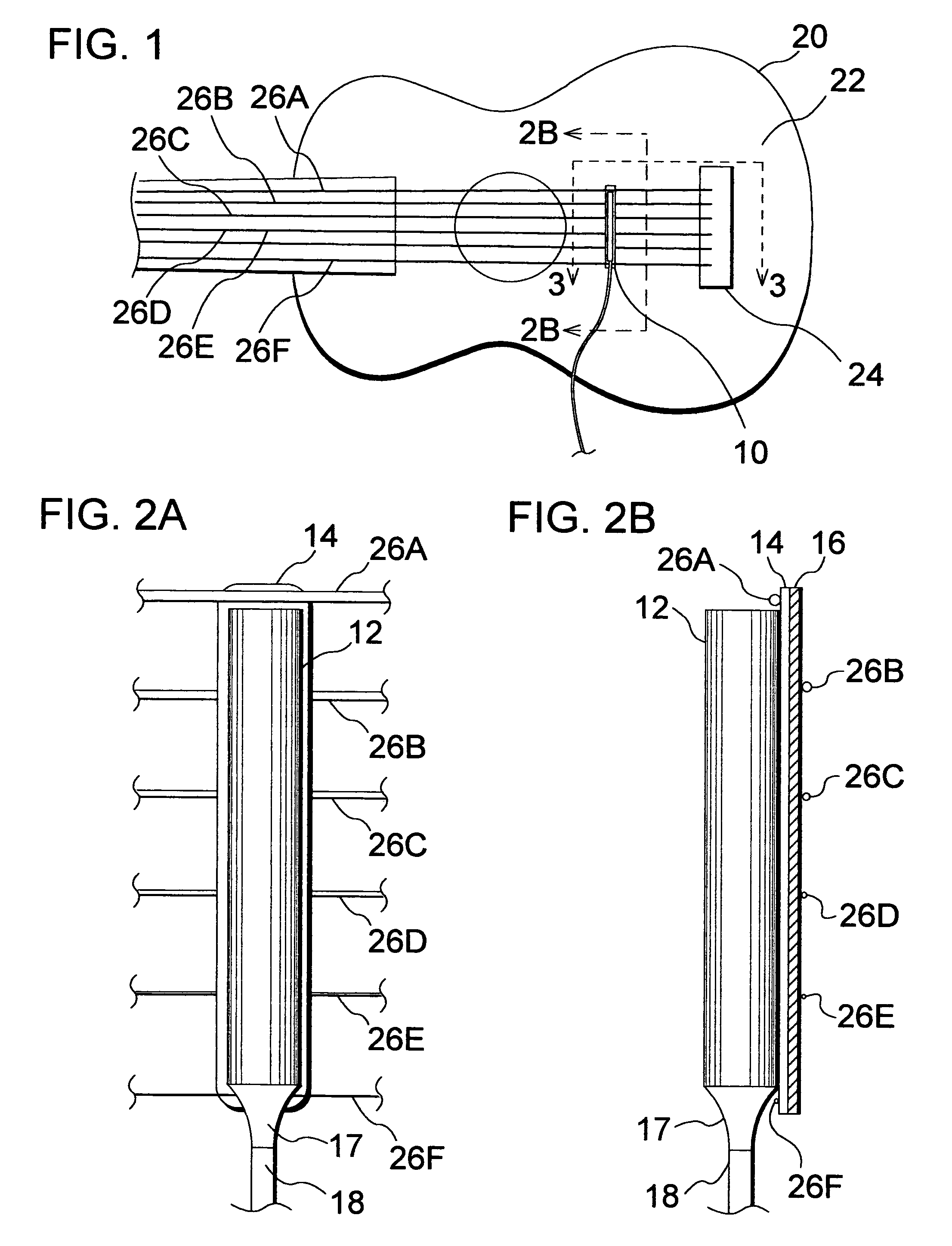String-mounted conditioner for stringed musical instruments
- Summary
- Abstract
- Description
- Claims
- Application Information
AI Technical Summary
Problems solved by technology
Method used
Image
Examples
Embodiment Construction
—PREFERRED EMBODIMENT—FIGS. 1 THROUGH 5
[0057]A preferred embodiment of the stringed instrument conditioner is illustrated in FIGS. 1-5. Like numerals indicate like parts throughout the several views. The stringed instrument conditioner according to the present invention is designated generally in the figures by the numeral 10, the stringed musical instrument by the numeral 20, and the vibrator that is part of conditioner 10 by the numeral 30. In the preferred embodiment, the stringed musical instrument is a guitar.
[0058]The stringed instrument conditioner 10 comprises an electrically activated vibrator 30 inside a protective housing 12 attached to a single transverse supporting member 14. The conditioner 10 is removably attached to the strings 26A-26F (referred to collectively when appropriate as 26) of guitar 20, and makes no other contact with guitar 20. Electrical activation of vibrator 30 within the conditioner 10 imparts vibrations to the strings 26 of guitar 20 and thence to t...
PUM
 Login to View More
Login to View More Abstract
Description
Claims
Application Information
 Login to View More
Login to View More - R&D
- Intellectual Property
- Life Sciences
- Materials
- Tech Scout
- Unparalleled Data Quality
- Higher Quality Content
- 60% Fewer Hallucinations
Browse by: Latest US Patents, China's latest patents, Technical Efficacy Thesaurus, Application Domain, Technology Topic, Popular Technical Reports.
© 2025 PatSnap. All rights reserved.Legal|Privacy policy|Modern Slavery Act Transparency Statement|Sitemap|About US| Contact US: help@patsnap.com



